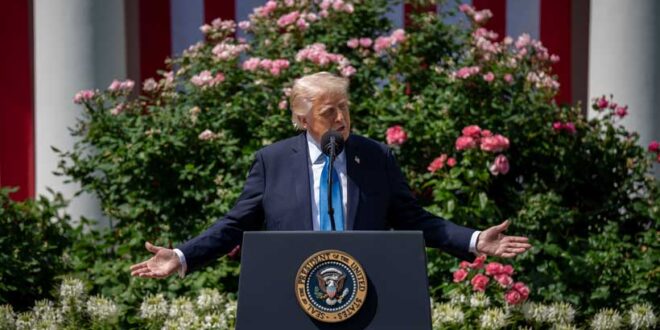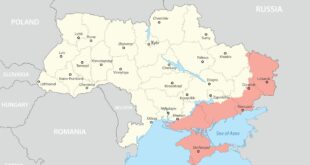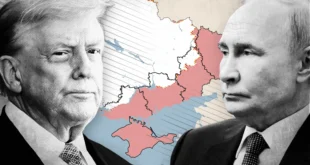For all the controversy that trails him, Donald Trump has a record of inserting himself into geopolitical standoffs and sometimes lowering the temperature. During his first term, he broke decades of taboo by meeting Kim Jong Un in Singapore in 2018 and again at the DMZ in 2019, moves that didn’t deliver denuclearization but did open direct channels and briefly cooled tensions on the Korean Peninsula. The Singapore joint statement spoke of “new U.S.–DPRK relations” and a “lasting and stable peace regime,” and the DMZ encounter marked the first time a sitting U.S. president set foot in North Korea. These were symbolic, yes, but diplomacy often begins with symbols that create space for more complex work. Supporters argue his presidency avoided launching new large-scale wars; critics counter that he still used force decisively at times (for example, limited strikes in Syria), so the “most peaceful” label depends on how one defines peace. What’s indisputable is his willingness to mix pressure with personal diplomacy in pursuit of de-escalation.
That mix just resurfaced in the South Caucasus. On August 8–9, 2025, Trump presided at the White House as Armenia’s Prime Minister Nikol Pashinyan and Azerbaijan’s President Ilham Aliyev signed a U.S.-brokered accord intended to ease decades of hostility. The deal isn’t a full treaty and leaves the fraught legacy of Nagorno-Karabakh unresolved, but it codifies steps to reopen routes and reduce military tensions, enough for cautious optimism in Baku and skepticism in Yerevan. For Trump’s self-image as a peacemaker, the optics were potent: a trilateral handshake under American auspices and a public claim of momentum toward normalization. The substance will be tested by implementation.
A record of de-escalation
Trump’s foreign-policy brand has always been transactional: align incentives, leverage pressure, stage big moments, and see if adversaries bite. In 2020, the Abraham Accords normalized Israel’s ties with the UAE and Bahrain, reshaping regional alignments even as the Israeli-Palestinian conflict festered. The point is not that Trump “solved” old conflicts; it’s that he created windows where escalation slowed and other deals became thinkable. In that sense, his defenders can plausibly claim he has shown a particular appetite for de-risking flashpoints through unconventional engagement and show-of-force bargaining.
The South Caucasus agreement extends that pattern. It showcased U.S. convening power and sidelined traditional mediators long seen as ineffectual. But it also offered a warning: when history runs deep and displacement is fresh, a declaration is only the beginning. If prisoner exchanges, border delimitation, and protections for civilians stall, goodwill evaporates quickly. Trump can cite the ceremony as precedent for what comes next; he should also treat it as a cautionary tale about enforcement and verification.
Alaska’s test
That “what comes next” arrives on August 15, when Trump meets Vladimir Putin in Alaska to talk about Ukraine. The venue is cleverly symbolically American yet geographically proximate to Russia, and the stakes are enormous. If even a durable ceasefire comes out of it, global energy and grain markets would breathe easier, and Europe’s security map could begin to settle. If a deal rewards aggression, it will rupture trust with allies and set a damaging precedent. European leaders have already signalled a line: robust security guarantees for Kyiv, no recognition of territorial changes by force, and negotiations only in the context of a verified ceasefire. Trump has hinted at “territorial swaps,” but Kyiv and Europe have pushed back hard against any settlement that legitimizes conquest. That clash between “end the war quickly” and “end it legitimately” is the core tension of Alaska.
Understanding Putin’s calculus is essential. Since 2022, he has codified annexation claims over four Ukrainian regions and framed them as historically justified and irreversible, underpinned by a long-running narrative that Russians and Ukrainians are “one people.” That doesn’t mean he can’t bargain; it means any framework that expects Kyiv to concede territory up front will collide with Ukrainian law, public opinion, and European politics. From Putin’s vantage point, the minimum objective is to lock in gains, curb Western arms to Ukraine, and fracture transatlantic unity. He will test whether Trump’s hunger for a “deal” can be bent toward those ends.
Trump’s theory of the case is straightforward: stabilize geopolitics to steady the global economy and, by extension, the U.S. economy. That was the political economy behind his Middle East normalization push and now undergirds his Ukraine diplomacy. Expect a blend of pressure and face-saving off-ramps in Alaska sanctions leverage and tariffs in one hand and a dramatic photo-op in the other. The risk is not in trying; it is in believing that theatrics can substitute for structure. A ceasefire that lacks monitoring, corridors that lack guarantees, or prisoner exchanges without timelines will wither fast. A framework with teeth, a monitored ceasefire tied to critical infrastructure safety, codified prisoner swaps, protected grain and energy corridors, and verifiable transparency around long-range systems would deliver near-term stability without forcing Kyiv to legitimize occupation on day one. That is the narrow path between appeasement and endless war.
None of this happens in a vacuum. European capitals won’t bankroll what they perceive as capitulation. Zelensky cannot survive a settlement that Ukrainians reject. And U.S. politics remain volatile: many will cheer any “deal,” but scrutiny of verification and enforcement will be ruthless. Framing Alaska as peace through strength and verification, not concession, matters if Trump wants a durable outcome. His past record offers both evidence for skeptics and tools for success. He can point to moments of de-escalation with North Korea and in the Middle East; his critics will point to limited strikes and to the reality that photo ops don’t equal peace. Both truths can coexist, and both should inform the approach in Alaska.
Which brings us back to Azerbaijan and Armenia. If the South Caucasus accord is implemented with discipline, opening routes, exchanging detainees, and deterring flare-ups, it will strengthen Trump’s argument that he can use White House theater to catalyze real steps toward peace. If it stalls, it will become an Exhibit A for those warning that ceremonies without enforcement age poorly. Either way, it sets the stage for Alaska by showing how much heavy lifting comes after the cameras.
The meeting in Alaska will not, by itself, end the Ukraine war. But it could mark a hinge: a verifiable ceasefire that protects civilians and infrastructure and creates room for serious security guarantees or a rushed arrangement that mortgages principle for optics. Trump’s instincts for personal diplomacy, dealmaking leverage, and economic framing have produced real de-escalations before. Putin’s aims of locking in territorial gains and rewriting norms will make this the roughest negotiation yet. If Trump wants to be remembered as a peacemaker rather than a dealmaker in search of a headline, Alaska must prove that his brand of transactional engagement can contain aggression instead of rewarding it. That is the decisive test history will remember.
 Geostrategic Media Political Commentary, Analysis, Security, Defense
Geostrategic Media Political Commentary, Analysis, Security, Defense





